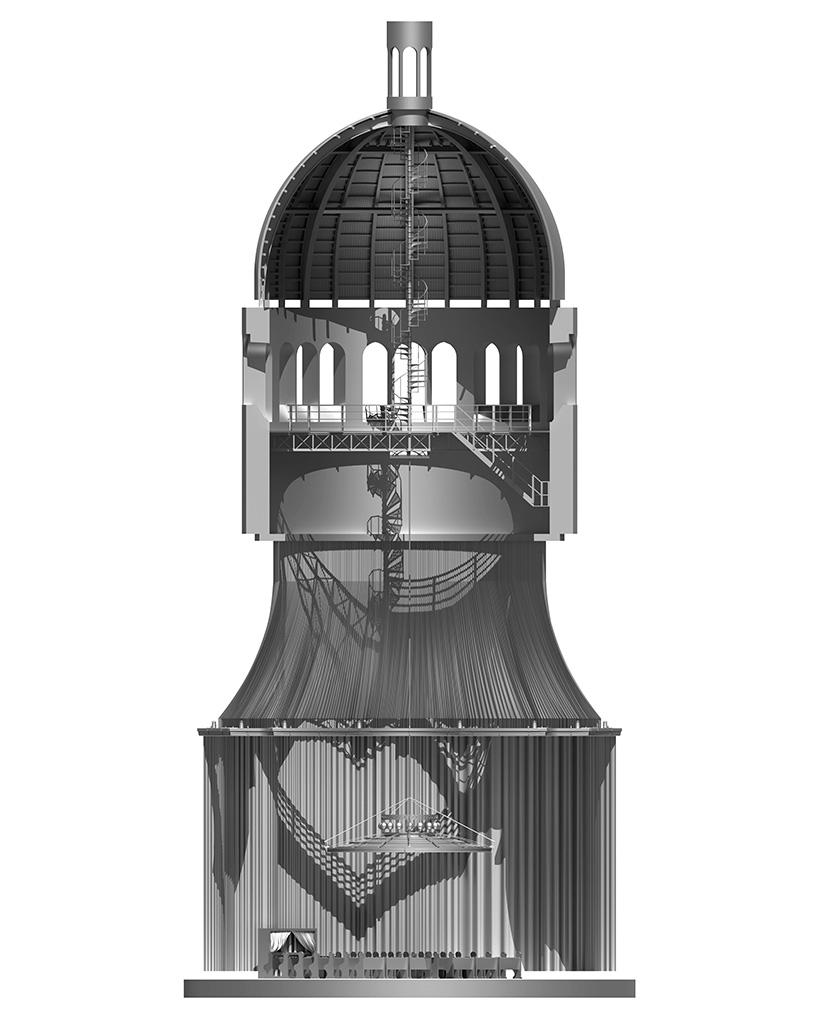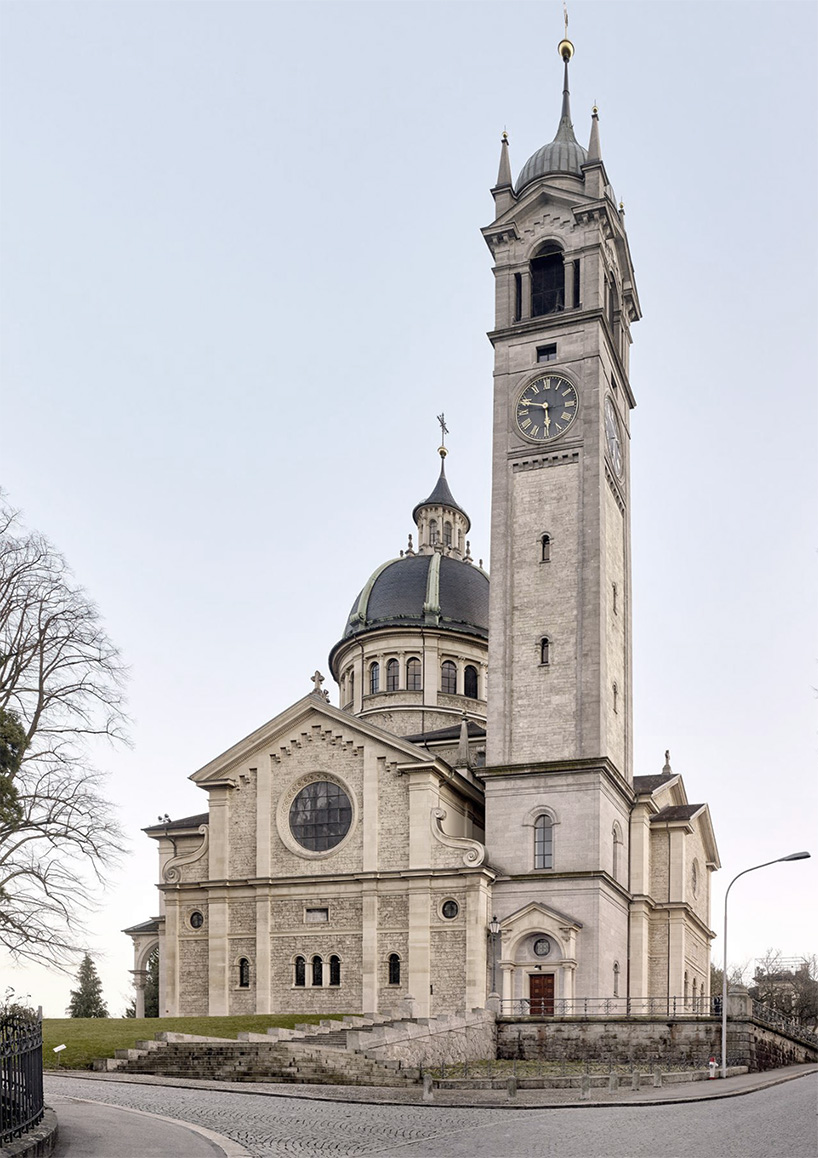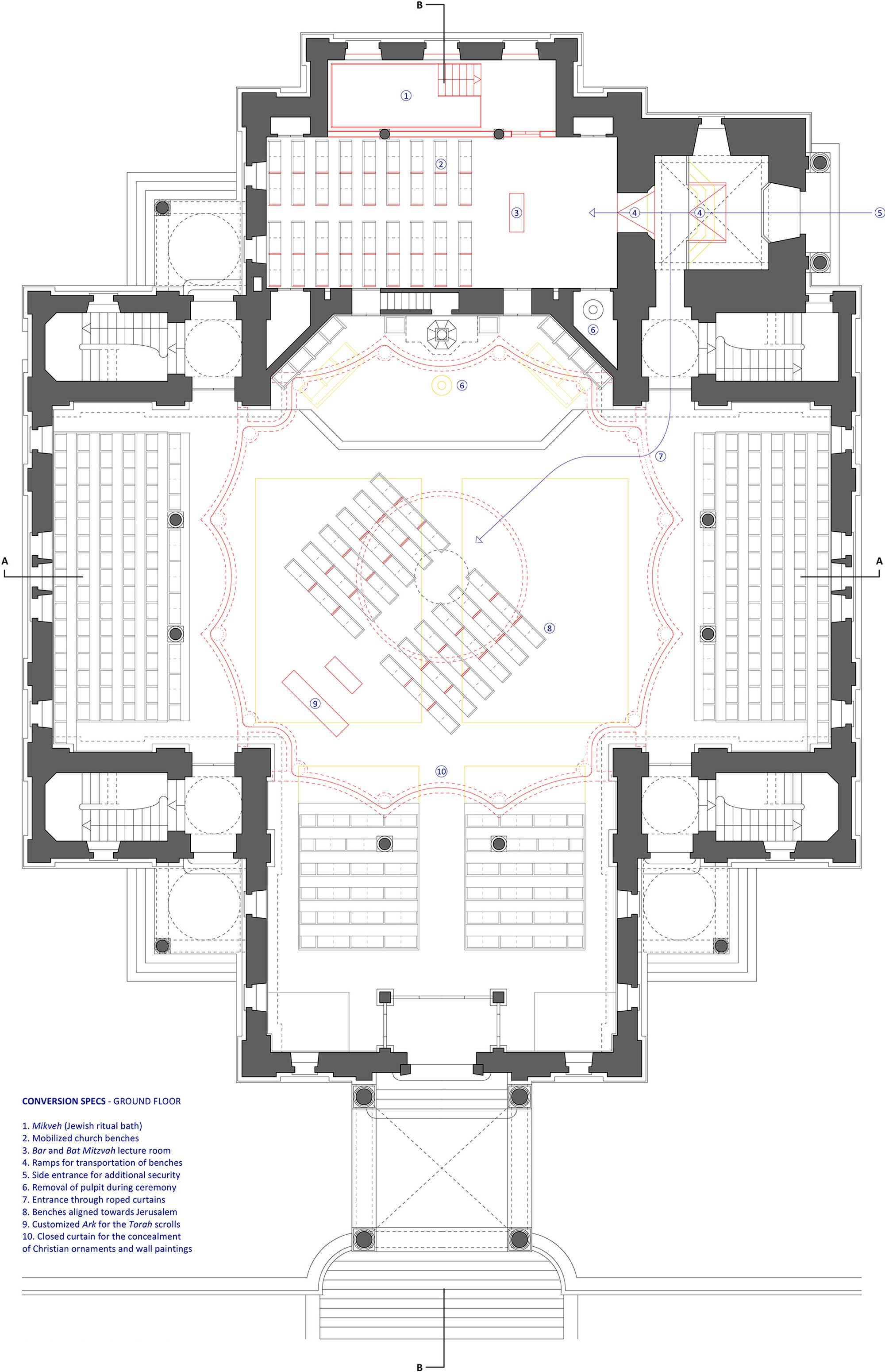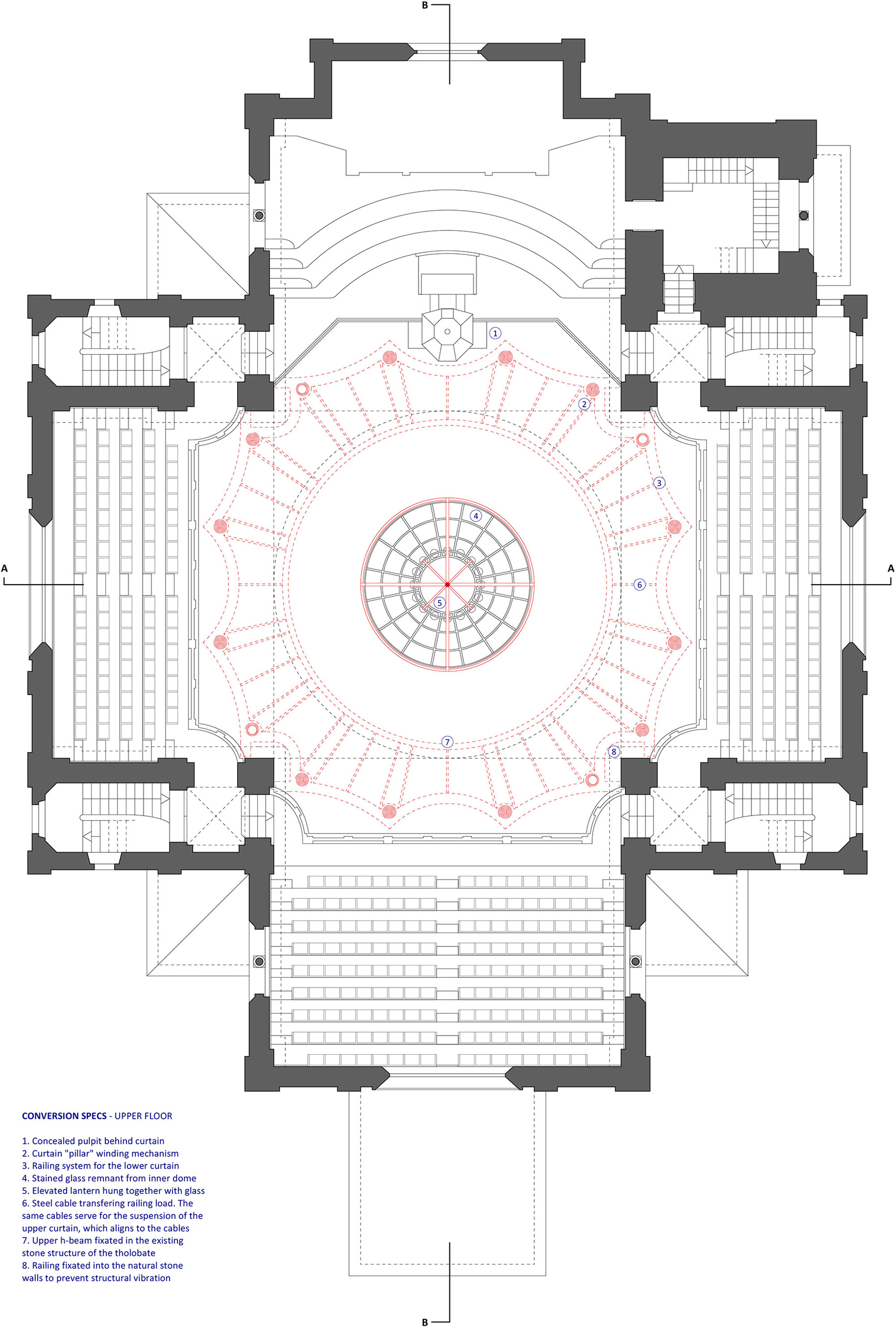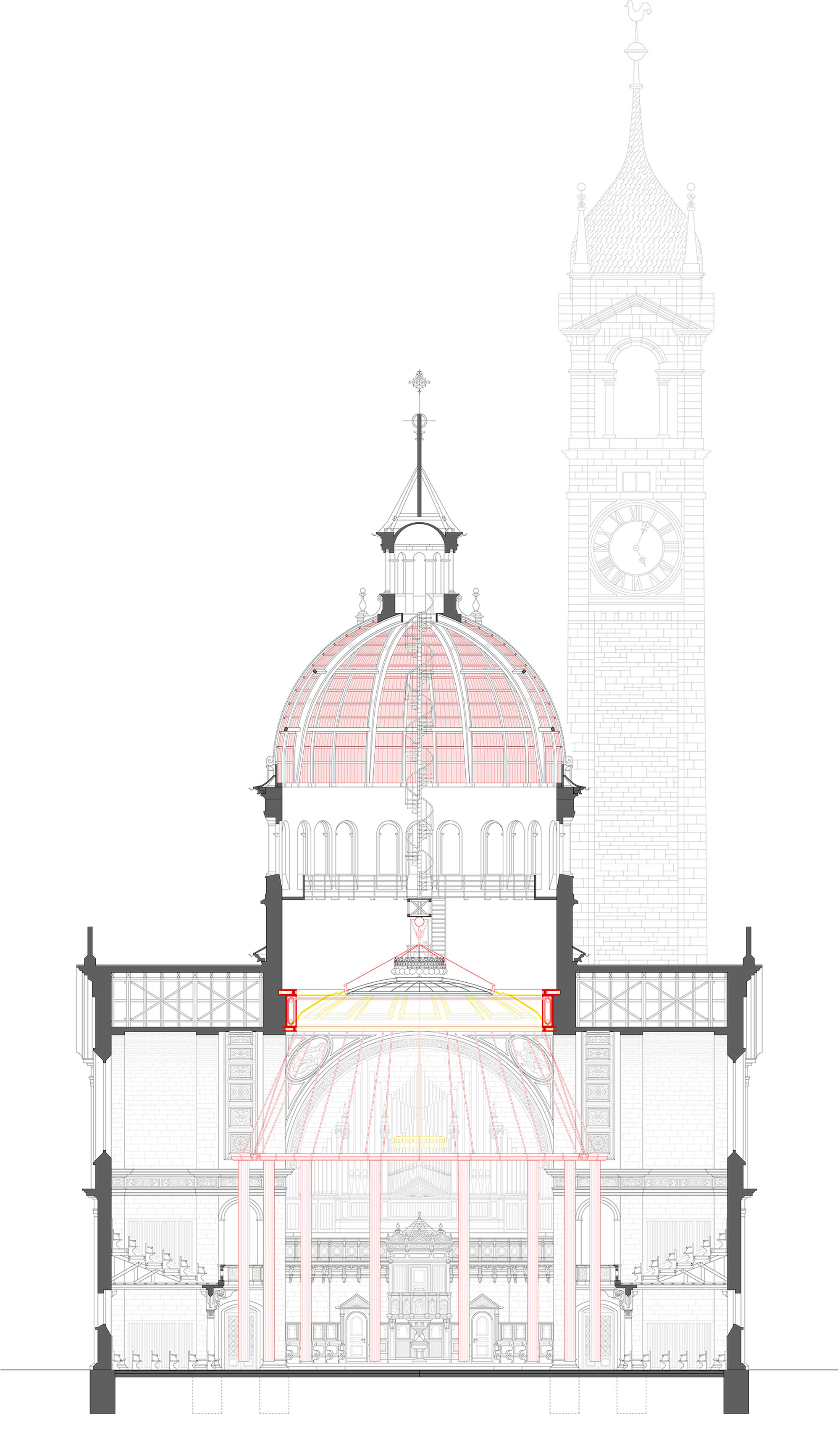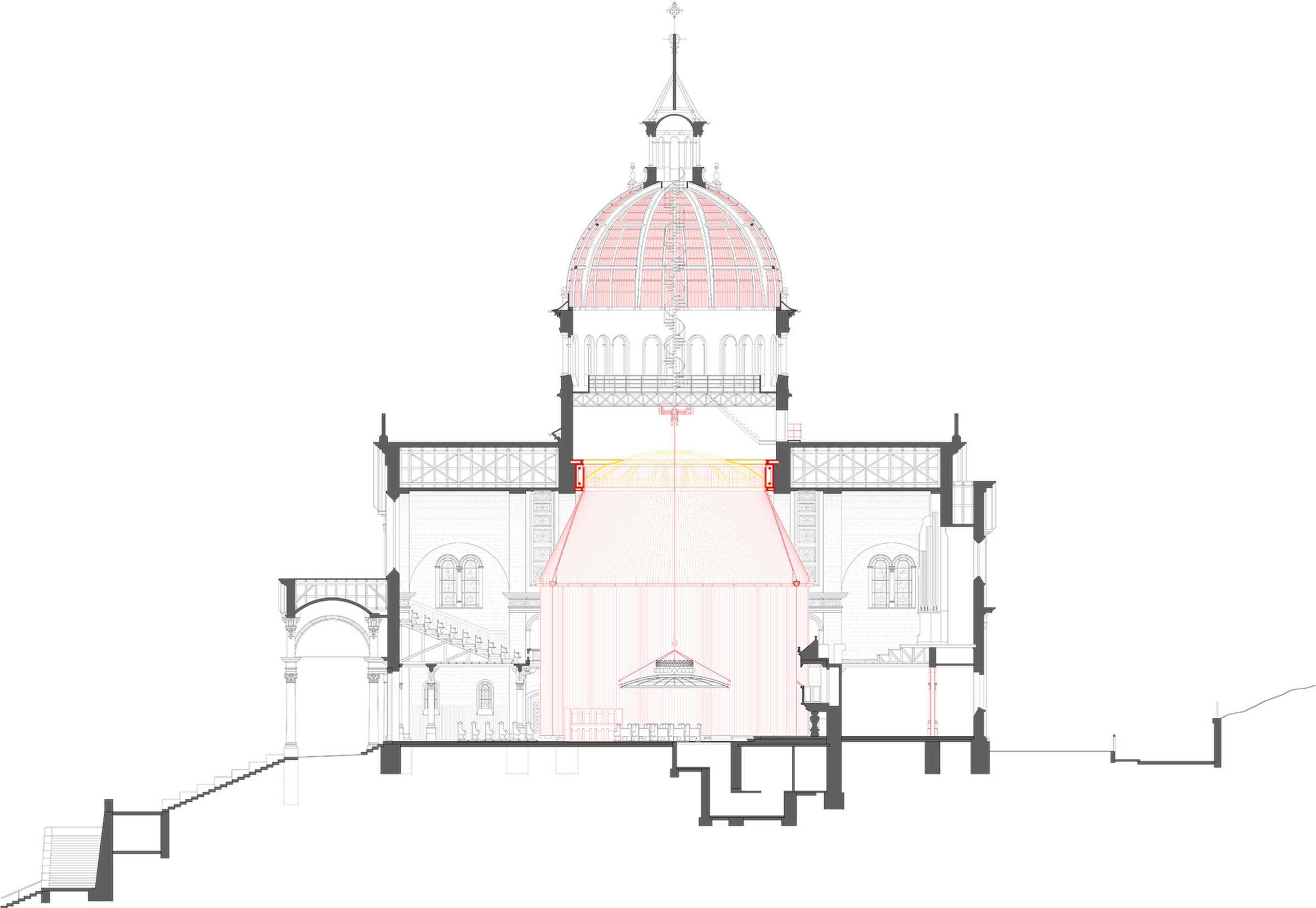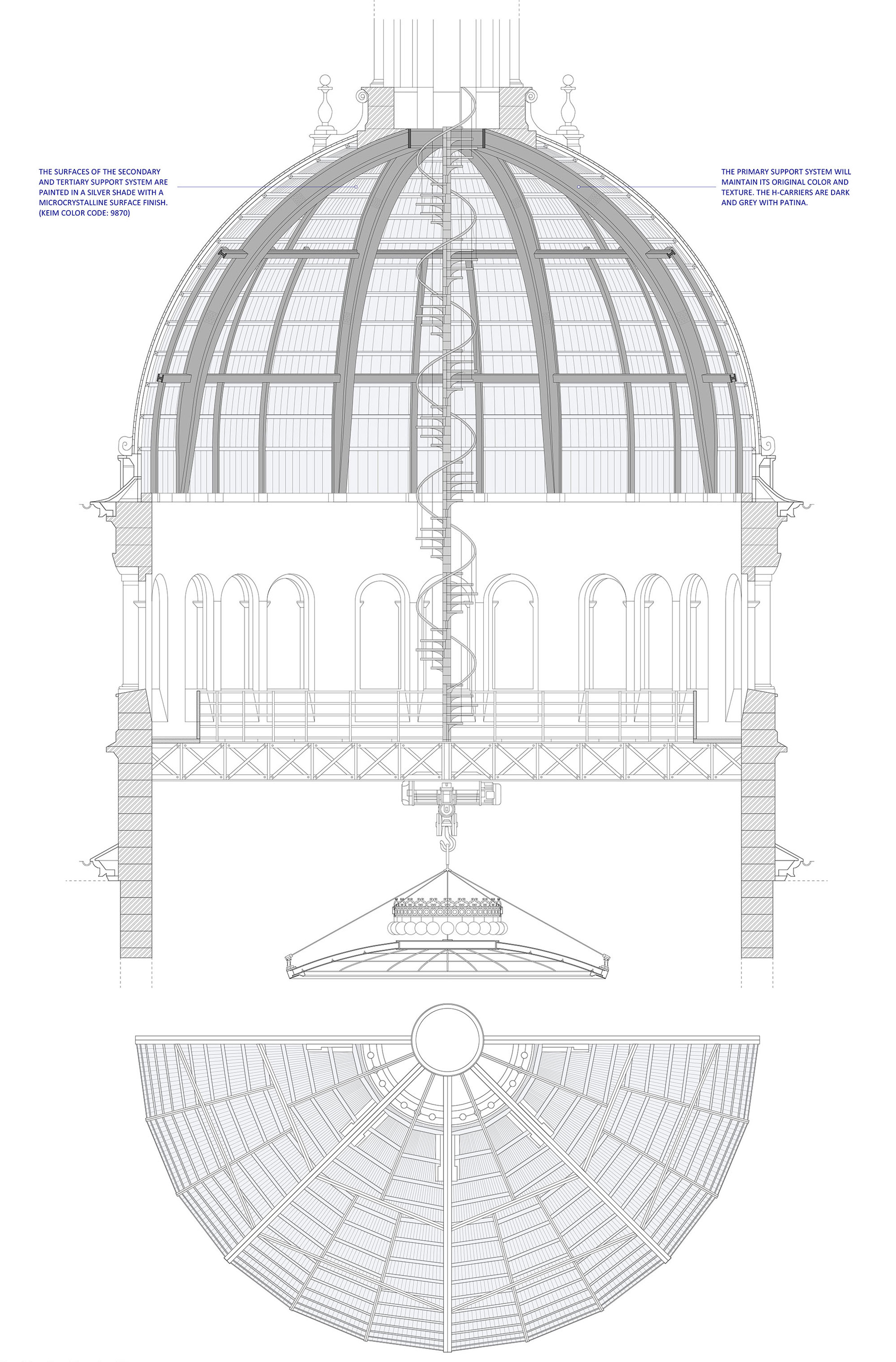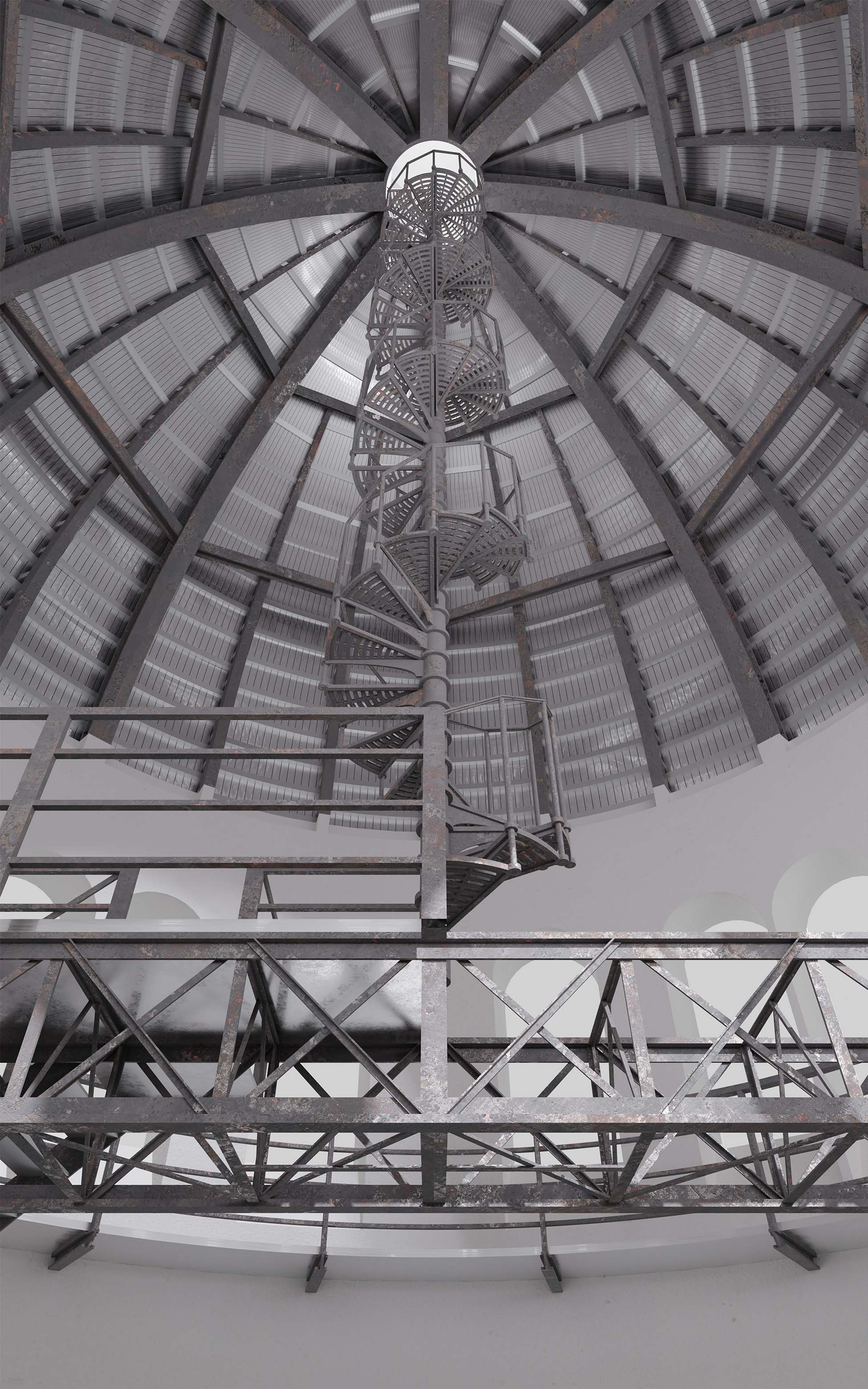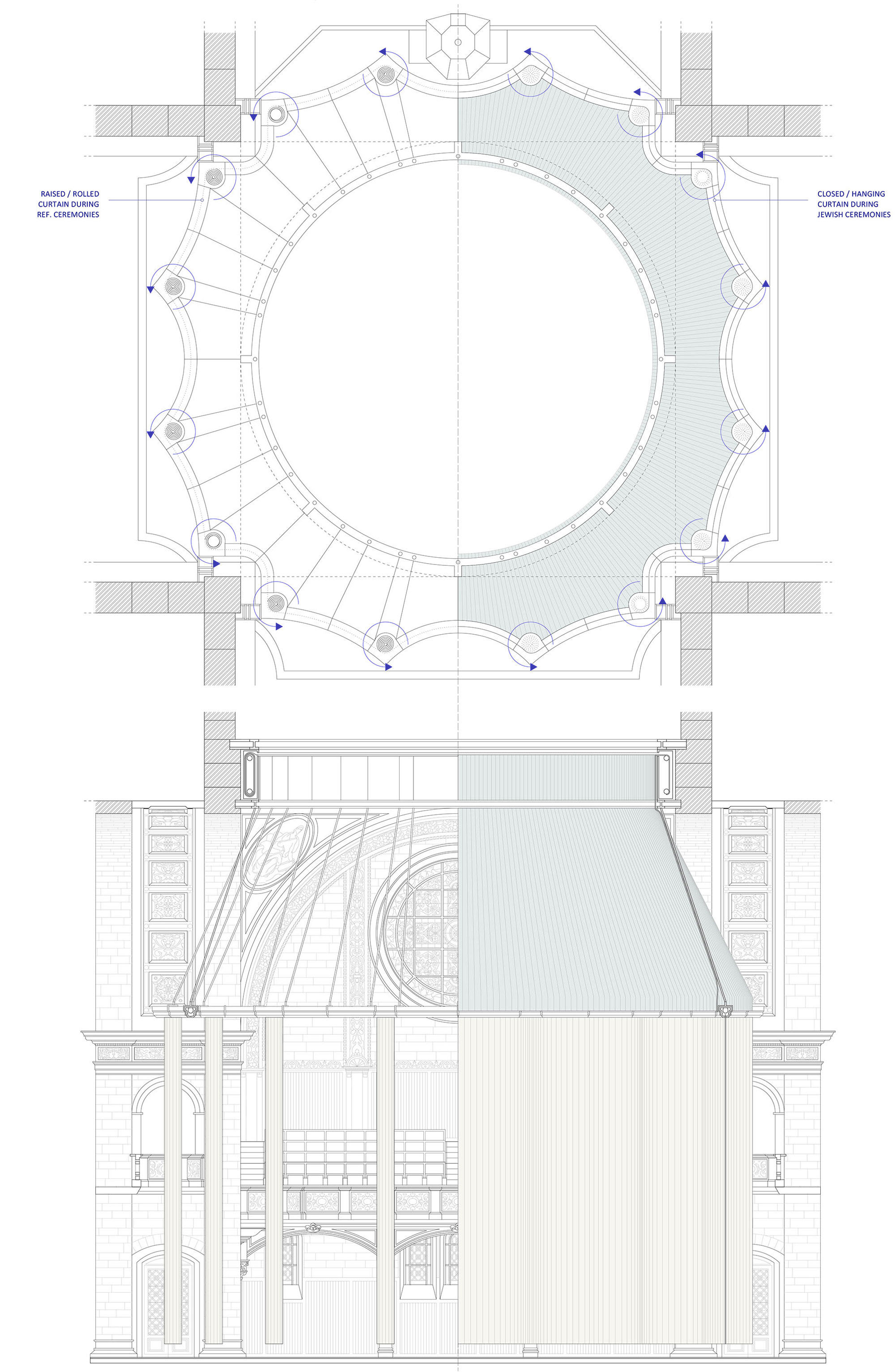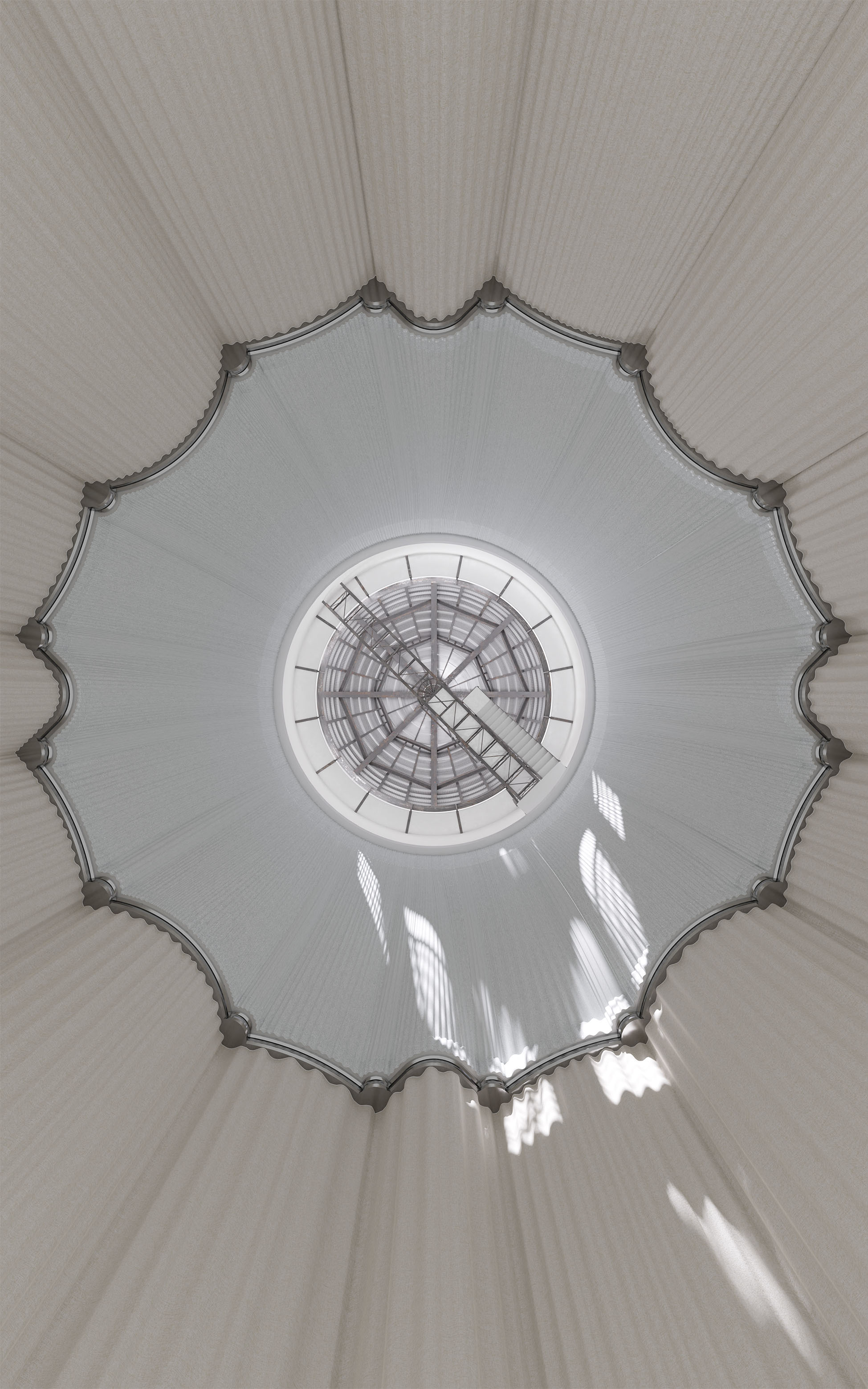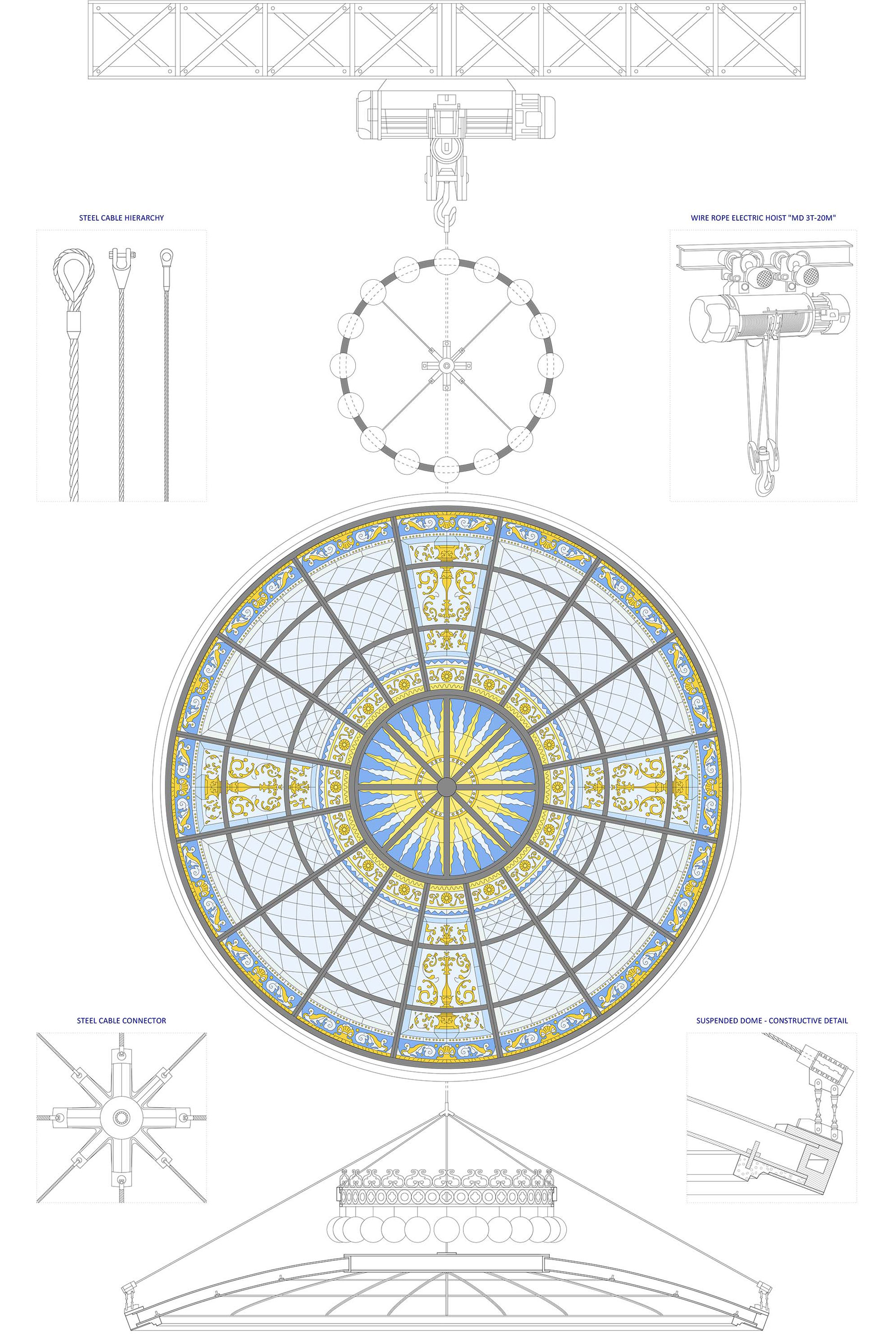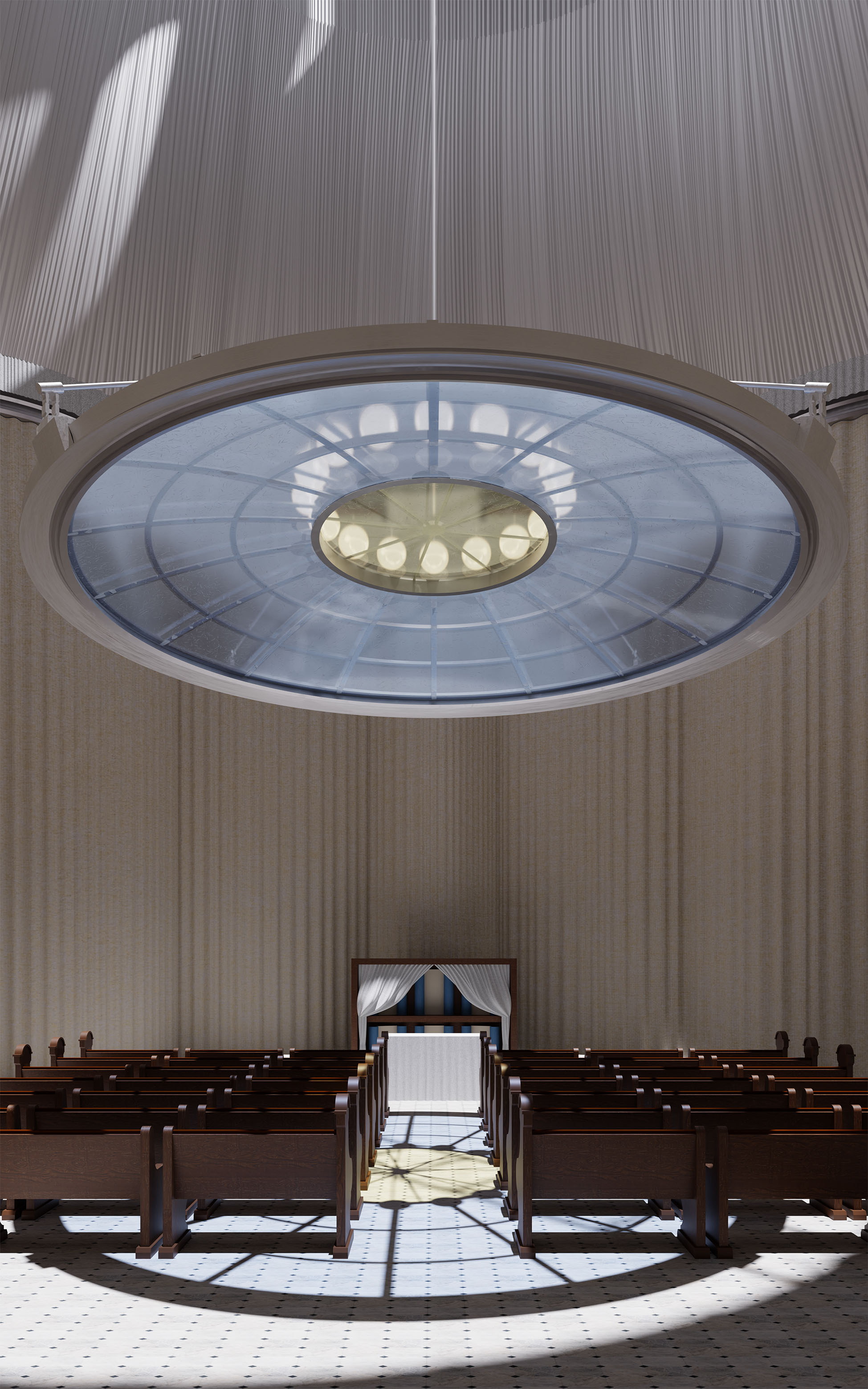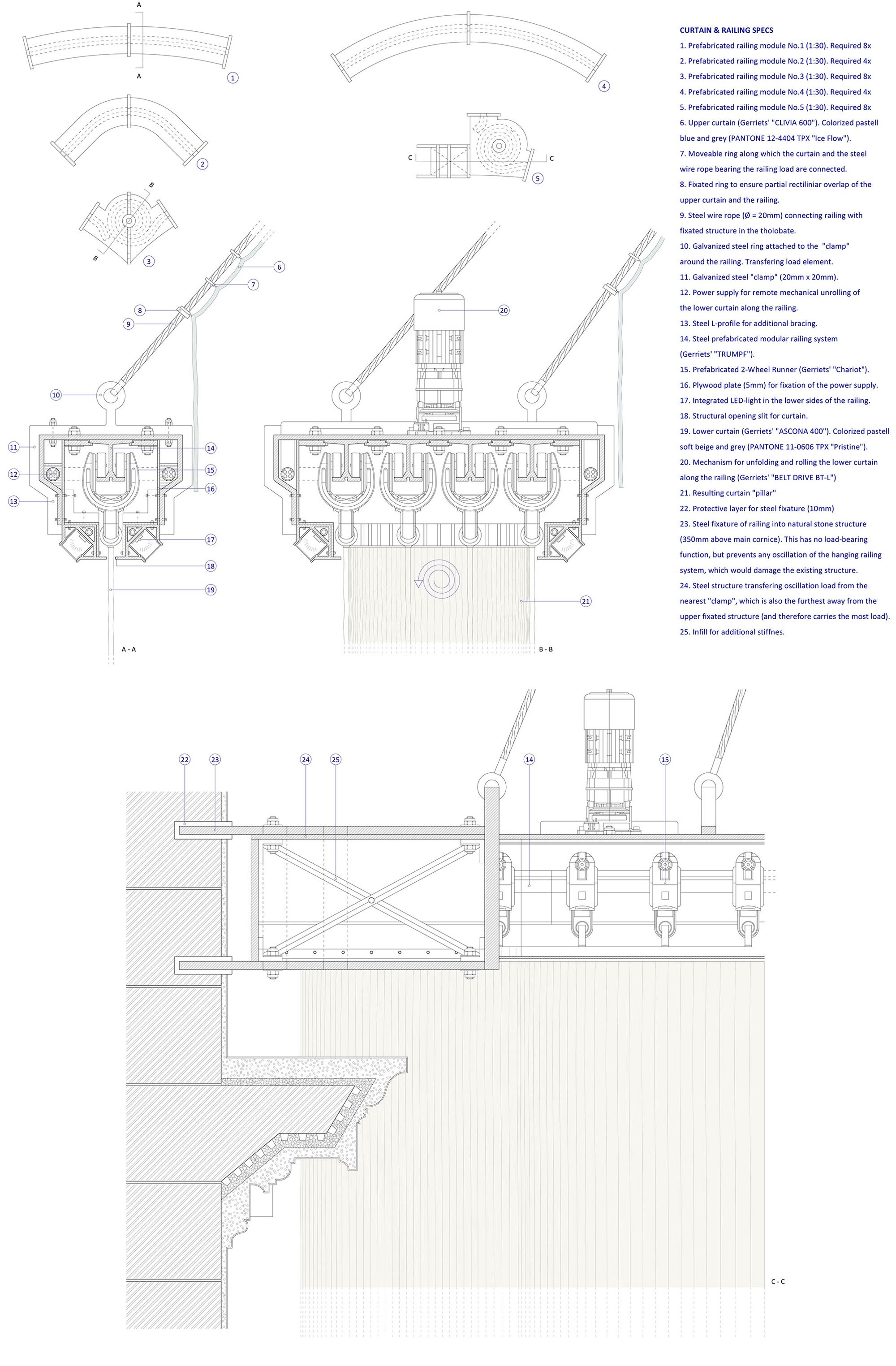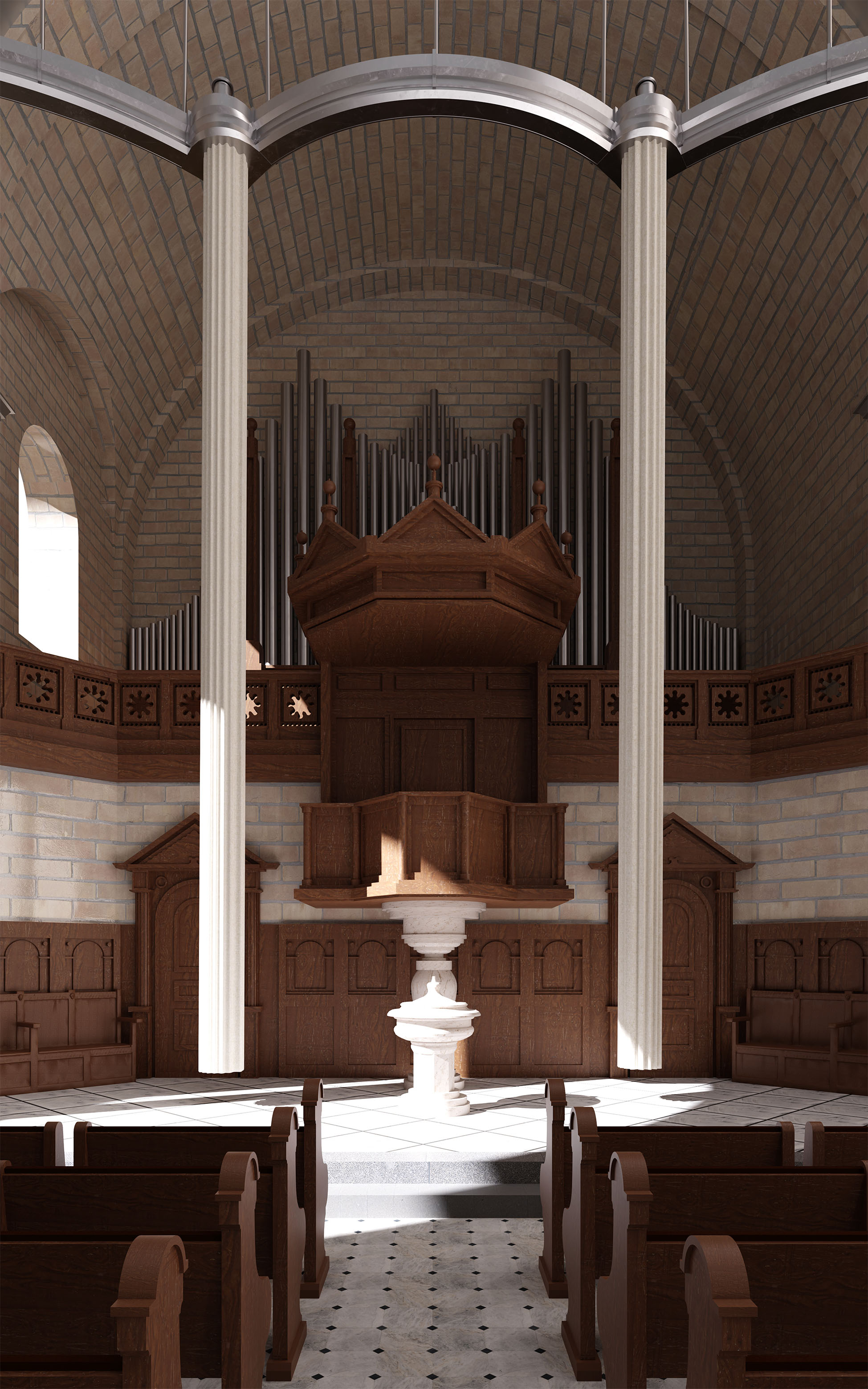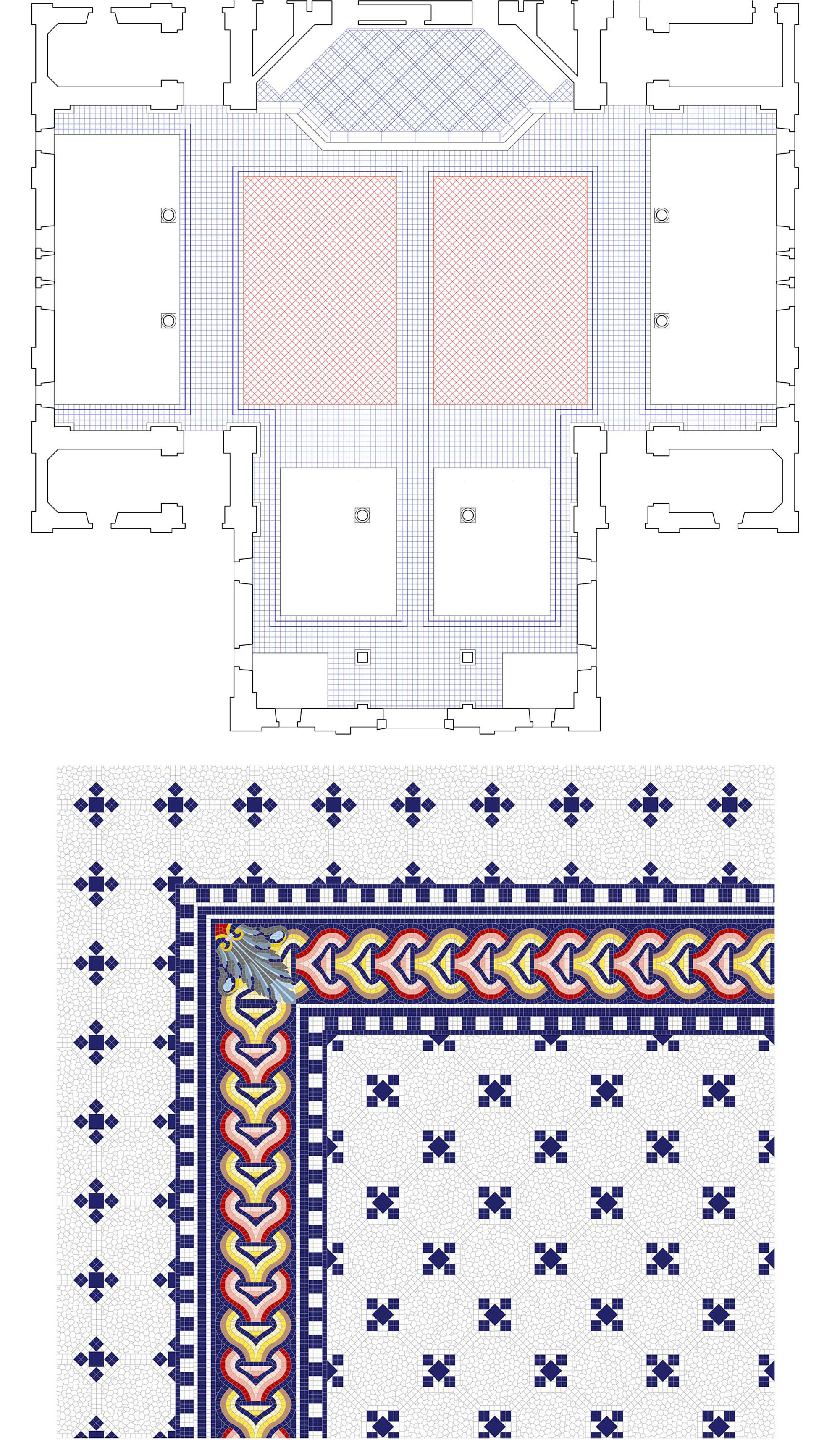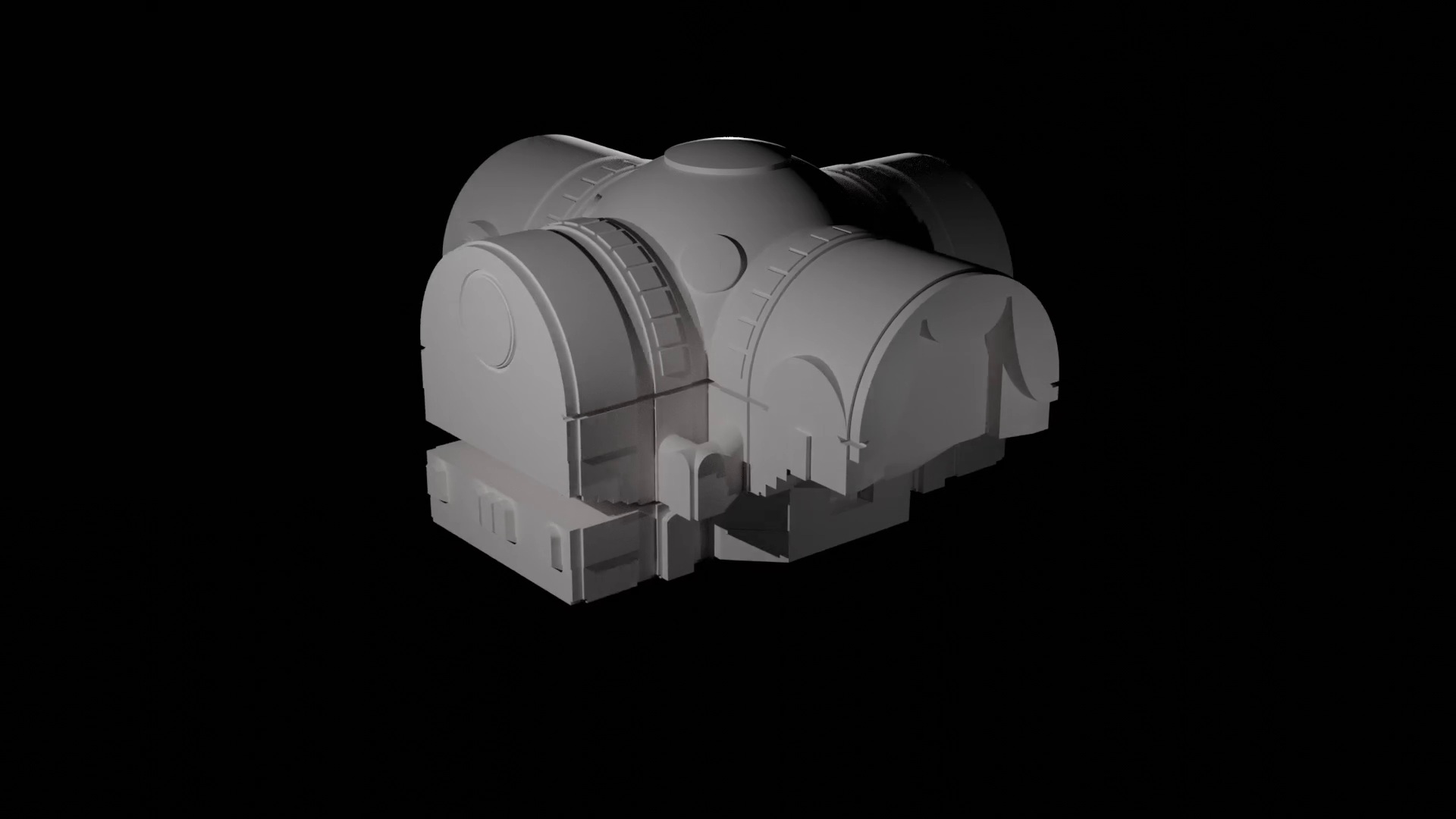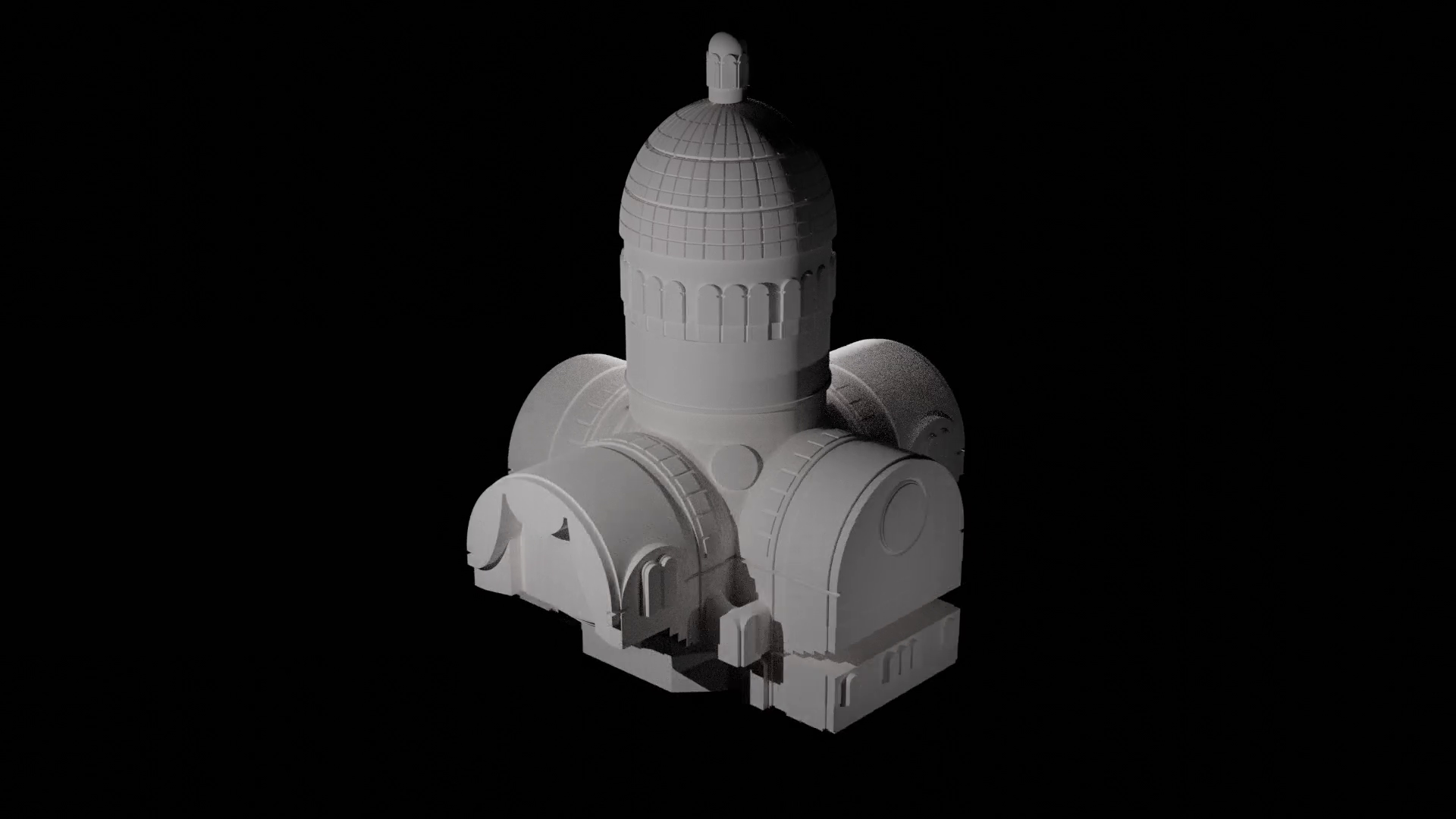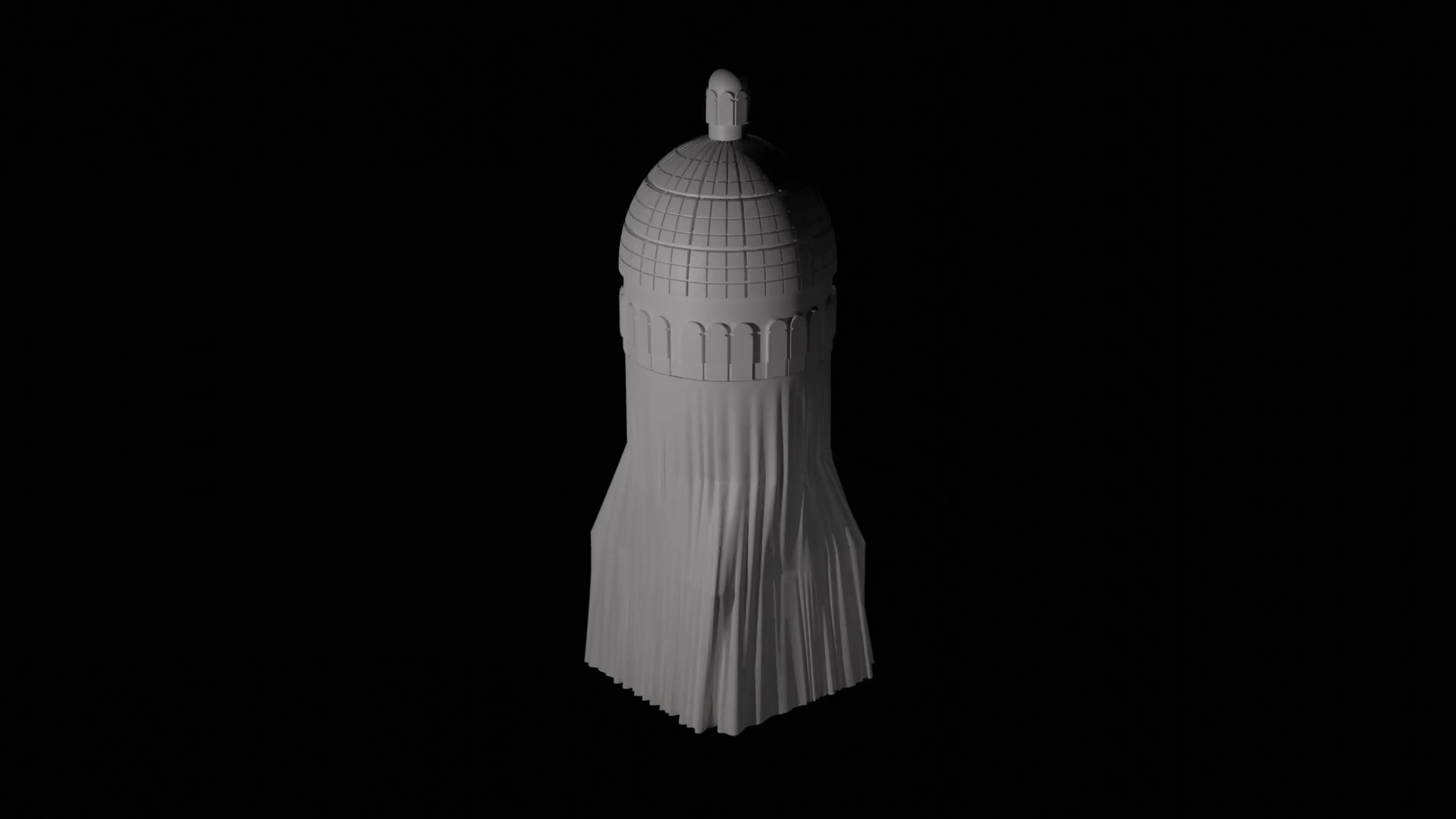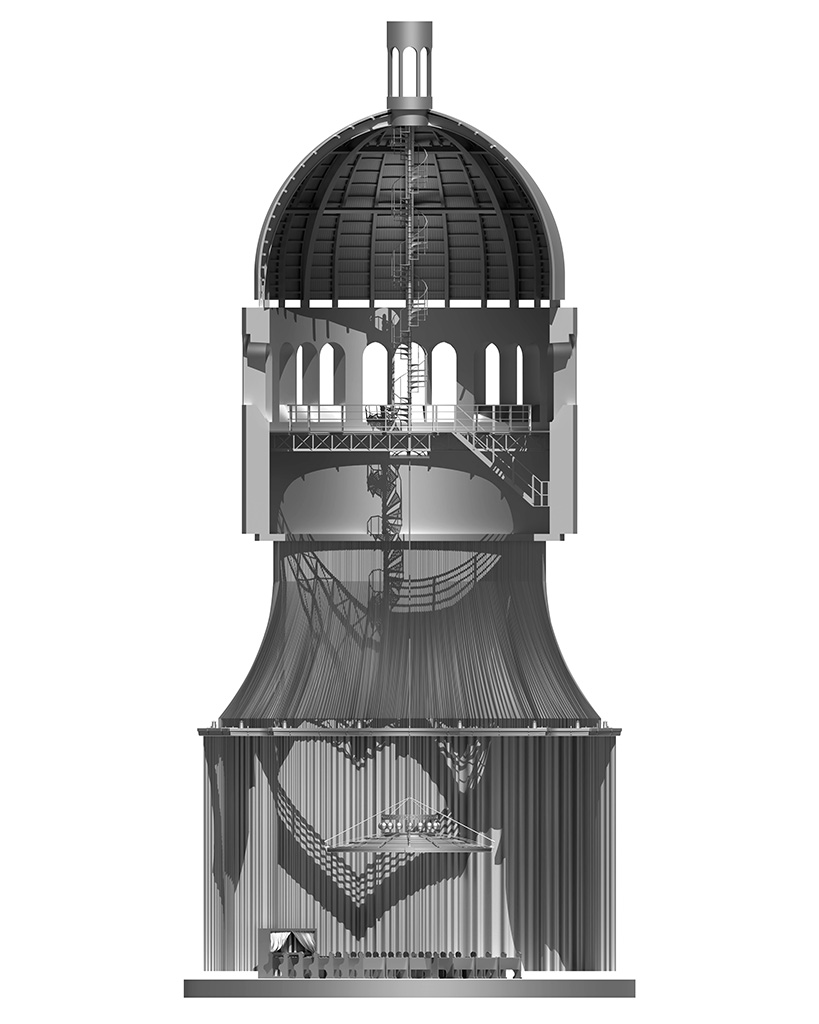A hybrid building for the Jewish community and the reformed church
High on top of the Bürgliterasse — a hill in the district of Enge in Zürich —stands the monumental reformed church Kirche Enge. It was built by Alfred Friedrich Bluntschli between 1892 and 1894. The distinct Neo-Renaissance style was directly inspired from Gottfried Semper himself, of whom Bluntschli was an important disciple. While the church was frequented by many inhabitants from the parish during the early twentieth century (the church provides seating for approx. 1200 people), the monumental church is currently severely underused. According to the sexton, a maximum of 100 people show up for the bi-monthly congregation.
Meanwhile, the Jewish community of Zürich, which is concentrated in Kreis 2 and 3, require a large amounts of space for worship and gathering. In this project, the specific constituency is Zürich's liberal Jewish community Or Chadasch ("New Light"). Through an interview with the president of Or Chadsch, the proposed project was briefed by some crucial requirements and contradictions. For the church in Enge to be converted into a synagogue, following aspects need to be considered:
The congregation must face Jerusalem, which lies on the diagonal axis of the crossing pointing towards South-East.Any depictions of Christian figures and symbols must be concealed. In general, ornamentation is undesired in a modern synagogue.The space should provide a much higher level of illuminance, as the synagogue will be used for multi-functional purposes (such as political talks, readings and festivities).These requirements should be solved with the stance of minimalist structural interventions, as the church stands under landmark status and does not allow significant constructive alter- ations. The mandatory S-E direction is addressed by creating a symmetrical space along the diagonal axes and making the church benches mobile. Any ornamentation will be covered by large-scale curtains (which can be contracted to ensure a hybrid use for both religions). The inner dome will be partially removed, which exposes the well-lit tholobate and allows for additional light to enter the church.
The shapes and concepts of the project have been informed by Semper's Stoffwechseltheorie, the emulation of existing elements of the church and formal concepts from the Kabbalah (a variety of Jewish mysticism).
